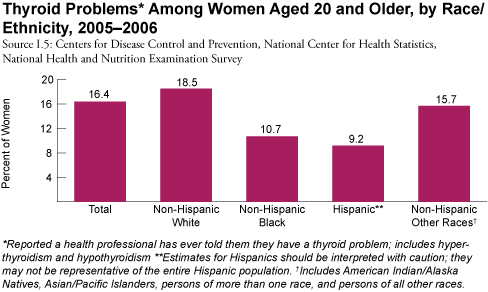Endocrine and Metabolic Disorders
Endocrine disorders involve the body’s over- or under-production of certain hormones, while metabolic disorders affect the body’s ability to process certain nutrients and vitamins. Endocrine disorders include hypothyroidism, congenital adrenal hyperplasia, diseases of the parathyroid gland, diabetes mellitus, diseases of the adrenal glands (including Cushing’s syndrome and Addison’s disease), and ovarian dysfunction (including polycystic ovary syndrome), among others. Some examples of metabolic disorders include cystic fibrosis, phenylketonuria (PKU), hyperlipidemia, gout, and rickets.
Polycystic ovary syndrome (PCOS) is one of the most common endocrine disorders among women of reproductive age, and is the most common cause of endocrine-related female infertility in the United States. An estimated 1 in 10 women of childbearing age has PCOS, and it can occur in females as young as 11 years of age. In addition, PCOS may put women at risk for other health conditions, including high blood pressure, heart disease, and diabetes.1
Hyperthyroidism and hypothyroidism are also common endocrine disorders. In 2005–2006, women were nearly five times more likely than men to report having ever been told by a health professional that they have a thyroid problem (16.4 versus 3.4 percent, respectively; data not shown). Among women, rates varied by race and ethnicity. Non-Hispanic White women were most likely to report a thyroid problem (18.5 percent), while Hispanic women were least likely (9.2 percent).
In 2006, the rate of physician visits due to endocrine and metabolic disorders varied by sex: 4.0 percent of physician visits made by men were for disorders of endocrine glands other than the thyroid, compared to 3.1 percent of visits made by women. The rate of visits due to metabolic and immunity disorders was also higher among men than women (2.7 versus 1.9 percent of visits, respectively). However, the rate of visits for thyroid disorders was higher among women than men (0.8 versus 0.3 percent of visits, respectively).
1 U.S. Department of Health and Human Services, Office on Women’s Health, National Women’s Health Information Center. Polycystic Ovary Syndrome (PCOS). http://4women.gov/faq/polycystic-ovary-syndrome.cfm, accessed 2/18/09.↑


